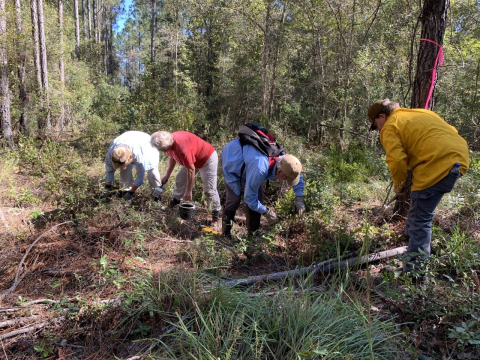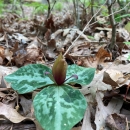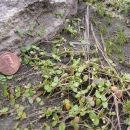Botanical Diversity in Georgia
Few places in the Nation can boast more about plant biodiversity than Georgia. And it’s no secret why. Glacial ice never crossed our state boundaries that stretch from the sub-tropical climate on our island-studded coast to the rugged Appalachian mountains. For centuryupon-century complex landscape and geology, sweeping fires, and other forces provided a patchwork-quilt of habitats for unique and rare plant species. In Georgia, over 650 species of plants are considered of “special concern,” 25 of those species are protected by the Endangered Species Act and 130 species are protected by state wildlife protection laws.
Conservation Through Research:
- Research on the endangered harperella (Ptilimnium nodosum) in 2006-2007 completely re-interpreted this species life-history, leading to new implications for habitat requirements and management.
- Genetic studies on the endangered fringed campion (Silene polypetala) provides for scientifically-guided management decisions for recovery, in cooperation with the University of Georgia.
- Research on the global status of three granite outcrop plants (Amphianthus pusillus, Isoetes tegetiformans, I. melanospora), in cooperation with The State Botanical Garden of Georgia.
- In 2005-2006, Georgia Field Office discovered four, new-to-science populations of endangered relict trillium (Trillium reliquum), endangered fringed campion, and candidate-for-listing Georgia aster (Symphyotrichum georgianum).
- Botanical research partnership, under section 6 of the ESA, with Georgia Department of Natural Resources.
- Propagation of endangered fringed campion. To benefit the public, plants will be donated to Southeastern botanical gardens.
Conservation Through Habitat Protection and Management:
- Partners for Fish and Wildlife Program funding to restore endangered species habitat, through invasive plants removal and replanting of native and endangered species, in cooperation with the Macon Museum of Arts and Sciences.
- To ensure the sustainability of a newly-discovered population of relict trillium, Georgia Field Office assisted the USDA Forest Service in modifying their Forest Management Plan.
- Prescribed burning on public and private lands through the Service-led initiative, the Interagency Burn Team, a cost-share agreement that pools the resources of government agencies, non-profit groups, and volunteer organizations to reintroduce the important dynamics of fire into natural habitats.
- The Georgia ES Field Office, in cooperation with Georgia Department of Transportation, is leading a safeguarding effort for an imperiled population of Georgia aster. A sensitive roadside population of the species will be relocated to a state Wildlife Management Area, where it can be appropriately managed and remain self-sustaining.
Georgia Plant Conservation Alliance
The Georgia Plant Conservation Alliance, or GPCA, is a network of 54 public gardens, government agencies, academic institutions, utility companies and environmental organizations committed to preserving Georgia’s endangered flora. The GPCA initiates and coordinates efforts to protect natural habitats and endangered species through biodiversity management, public education and rare plant propagation and outplanting (i.e., safeguarding). Member organizations are engaged in recovery projects for 112 plant species, including 29 federally listed species.








